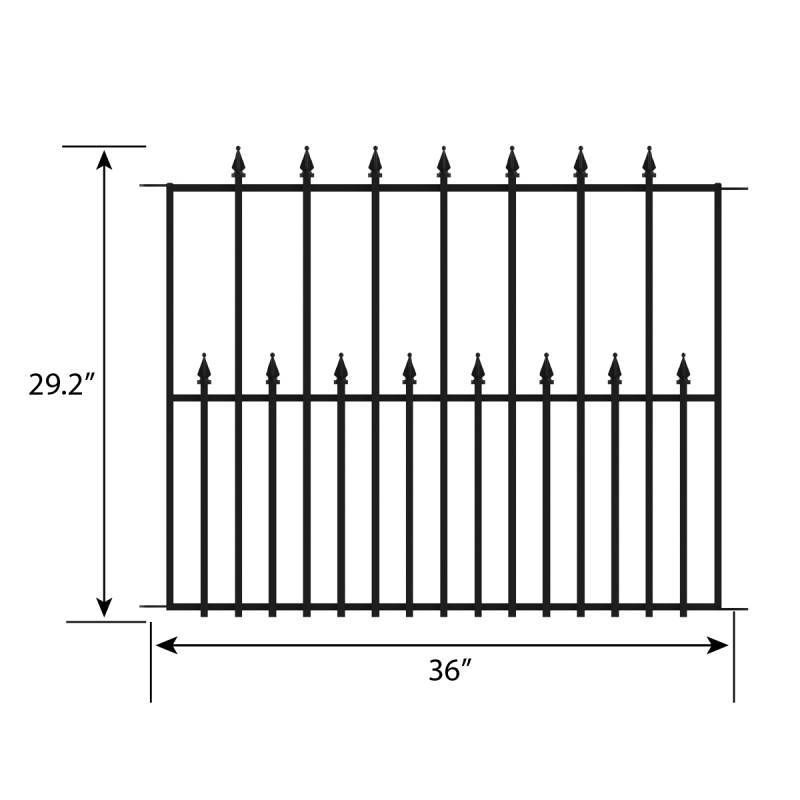triple concertina fence
снеж . 26, 2024 05:13
Understanding the Triple Concertina Fence A Comprehensive Overview
The triple concertina fence is a security infrastructure designed to provide a robust physical barrier, often employed in high-security areas such as military bases, correctional facilities, and government buildings. Its unique design and structure offer a formidable deterrent against unauthorized access, vandalism, and other security threats. This article explores the intricacies of the triple concertina fence, delving into its construction, applications, advantages, and considerations for implementation.
Construction and Design
A triple concertina fence consists of three rows of concertina wire, which is a type of barbed wire formed into spirals or coils. Each coil is designed with sharp edges and spikes that make it incredibly challenging to breach. The concertina wire is typically made from high-tensile steel, ensuring durability and resistance to rust and corrosion.
The configuration of a triple concertina fence begins with the installation of vertical posts, which serve as the backbone of the structure. These posts are firmly anchored into the ground to withstand pressure and external forces. The concertina wire is then affixed to the posts, creating overlapping coils that form a layered and imposing barrier. The height of the fence can vary, but it is usually installed at a minimum height of 2.4 meters (about 8 feet) to prevent individuals from easily climbing over it.
Applications
The applications of triple concertina fences are diverse and span various sectors.
1. Military Installations One of the primary uses of triple concertina fences is in military bases, where security is paramount. These fences help to safeguard sensitive areas from potential intrusions, ensuring that only authorized personnel have access.
2. Correctional Facilities Prisons and detention centers utilize triple concertina fences to prevent escapes and deter potential threats from outside the facility. The imposing nature of these fences serves as a psychological barrier, discouraging malicious intent.
3. Government Buildings Many government institutions incorporate triple concertina fences as part of their security protocols. This includes embassies, courthouses, and other federal buildings where security concerns are significant.
4. Industrial Sites Factories and warehouses, particularly those dealing with hazardous materials, may use these fences to protect against theft, vandalism, and unauthorized entry.
Advantages
triple concertina fence

The triple concertina fence offers several advantages that make it a popular choice for security applications
- Deterrence The visual appearance of the triple concertina fence acts as an immediate deterrent to would-be intruders. The formidable design signals that the area is secure, often dissuading attempts to breach the barrier.
- Low Maintenance Once installed, concertina fences require minimal maintenance compared to other security measures. Their durability means they can withstand harsh weather conditions without significant wear.
- Cost-Effective In comparison to other fencing and security options, the triple concertina fence is often a more cost-effective solution, especially when factoring in longevity and low maintenance costs.
Considerations for Implementation
While the benefits of a triple concertina fence are evident, there are considerations that need to be addressed before installation
- Legal Compliance Depending on the region and intended application, various regulations may govern the installation of concertina fences. It is essential to check local laws and regulations to ensure compliance.
- Environmental Impact Consideration should be given to the environmental impact of installing such fences, particularly in ecologically sensitive areas. Assessment of wildlife pathways and habitats is crucial.
- Public Perception The intimidating appearance of a triple concertina fence can evoke fear or hostility. It's important for organizations to manage community relations and provide transparency regarding the reasons for such security measures.
Conclusion
The triple concertina fence serves as an effective security solution in numerous high-risk environments. By combining physical deterrence with practical advantages, it has become a staple in the realm of security infrastructure. However, thoughtful implementation, regulatory compliance, and community consideration are essential to ensure that the benefits are maximized while minimizing potential drawbacks. As security challenges evolve, so too will the designs and technologies surrounding barriers like the triple concertina fence, continuing to play a pivotal role in safeguarding important assets and areas.




















